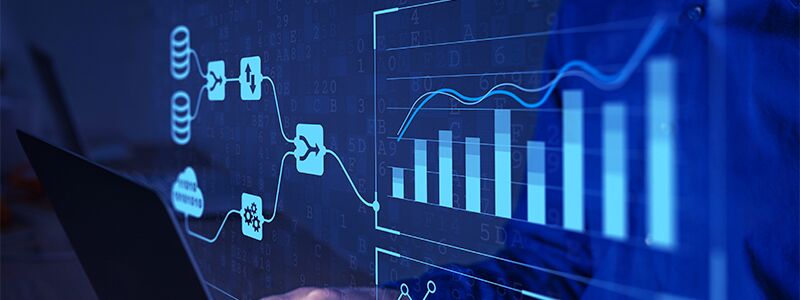In the world of LLMs, size doesn’t matter. It’s how you generate output that counts. Generative AI (GenAI) adoption rate in organizations jumped from 33% to 65% this year, which means if your organization isn’t leveraging AI, it’s time to get on board or get left behind.
One powerful way enterprises are leveraging GenAI is by training and deploying private Large Language Models (LLMs). Public LLMs are helpful for everyday tasks, but companies have data privacy and accuracy concerns, and rightfully so.
So, what should an enterprise that doesn’t want to give up its data to public LLMs like ChatGPT and Gemini do? The obvious solution is private LLMs. Organizations like Deloitte, JPMorgan Chase, Goldman Sachs, and Morgan Stanley have already deployed private LLMs to assist their teams.
So, what about your AI initiative? How can your data team derive value from an LLM? That’s where RAG vs. Fine-Tuning, the two promising frameworks for GenAI development and optimization, come in.
Transform your raw data into insights with Astera
Leverage RAG to maximize your unstructured data's potential. Build and Implement your own RAG with Astera.
Let's discuss your data and AI needs. What Makes RAG the Jack of All Trades

How Retrieval-Augmented Generation works
Retrieval-Augmented Generation (RAG) is a Gen-AI framework that can connect an LLM to your curated, dynamic database. It’s like having a really smart assistant who doesn’t just rely on memory but can look up information from trusted sources in real-time to give you the best answer.
Suppose a marketer on your team is creating a report. Instead of only using what they know, they can search the enterprise database, check recent reports from other teams, or pull up relevant information to support their writing as they go. That’s what RAG does—it combines the power of an LLM (the “memory”) with the ability to retrieve up-to-date, relevant information from your private, curated databases (the “research”) so you can get more accurate and context-aware answers.
What Makes Fine-Tuning the Master of One

How Fine-Tuning works
A fine-tuned LLM is like an artist who first learns the basics and then masters a specific art style.
As the name suggests, Fine-tuning involves adjusting a pre-trained LLM to focus its capabilities on a specific task or domain. This involves first training an LLM on an enormous volume of data, so it learns general language patterns, followed by training on a narrower specialized dataset.
Fine-tuned LLMs can be helpful in specific applications such as code generation or customer service, but if you’re looking for an LLM that can cater to the needs of your entire workforce, fine-tuning won’t cut it.
When to Use RAG vs. Fine-Tuning
With Generative AI-nxiety on the rise, enterprises are looking to incorporate AI across the board. This means that there may be varying Gen-AI use cases in a single organization. While RAG is the better option for most enterprise use cases (on account of being more secure, more scalable, and more reliable), Fine-tuning can be the answer for certain applications.
When to Use RAG
RAG is most useful when you need your model to generate responses based on large amounts of contextual data.
Chatbots/AI Assistants
Chatbots or AI assistants can generate contextually accurate responses by extracting relevant information from instruction guides and technical manuals. They can generate hyper-personalized insights that lead to timely, data-driven decision-making by tapping into enterprise databases.
Document Processing Pipelines
RAG can help enterprises establish their document processing pipelines by retrieving relevant information from a large dataset while leveraging the LLM to generate accurate, context-aware responses. RAG empowers document processing pipelines to handle complex queries or extract specific details by improving the efficiency and accuracy of LLMs.
Educational Software
Educational software can also benefit from the combination of RAG and Gen AI, allowing students access to relevant answers and context-specific explanations.
Legal or Medical Searches
RAG can also help with legal or medical queries if the LLM is paired with the right data set. However, the level of accuracy required in these fields means human oversight may still be compulsory.
When to Use Fine-Tuning
Fine-tuning is a practical approach in cases where an LLM needs to be trained for a specialized use case like:
Personalized recommendations
For content providers like Netflix or Spotify, fine-tuning a pre-trained LLM allows it to process better and understand each user’s unique needs and preferences and serve recommendations accordingly.
Named-Entity Recognition (NER)
It’s also an effective approach when you need an LLM to recognize specialized terminologies or entities (for instance, medical or legal terms). A generic LLM would typically generate inaccurate or low-quality responses in such a case, but a fine-tuned LLM can get the job done.
The Verdict on RAG vs. Fine-Tuning
Choosing between RAG and Fine-Tuning comes down to your requirements and specific use cases.
If you want to leverage GenAI to empower your teams without compromising data privacy, RAG is the way to go. If you want to establish a document processing pipeline, RAG is the obvious winner. But if you’re looking to augment an LLM for a highly specialized use case, fine-tuning may be the better option.
Before you make your decision, you should also consider the cost, customizability, and scalability of each approach.
Astera Intelligence Is Leveraging RAG To Make Document Management a Breeze
At Astera, we believe in continuous improvement. Plus, we’re big fans of AI! That’s why our award-winning unstructured data management solution is getting an exciting upgrade, as we harness the power of RAG to make your document management smarter, faster, and easier than ever.
With Astera Intelligence, you can easily automate your document processing and extract the relevant information from hundreds (or even thousands) of documents in just a few clicks. What’s more? You can build and deploy your own RAG systems instantly and avoid sending your data outside.
Book a demo to see how our next-gen solution simplifies your document management with AI.
Authors:
 Raza Ahmed Khan
Raza Ahmed Khan


